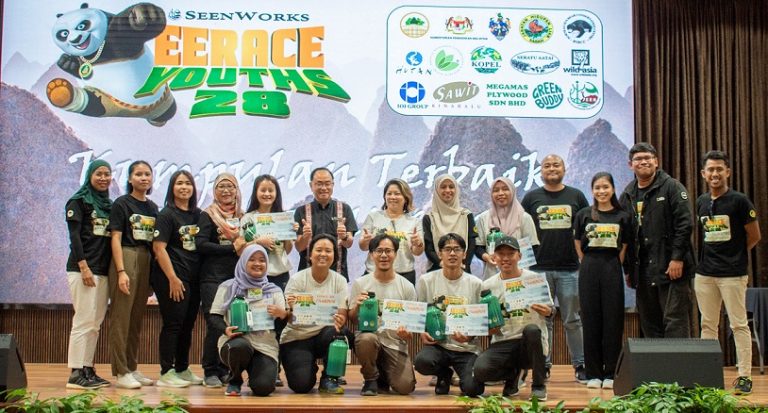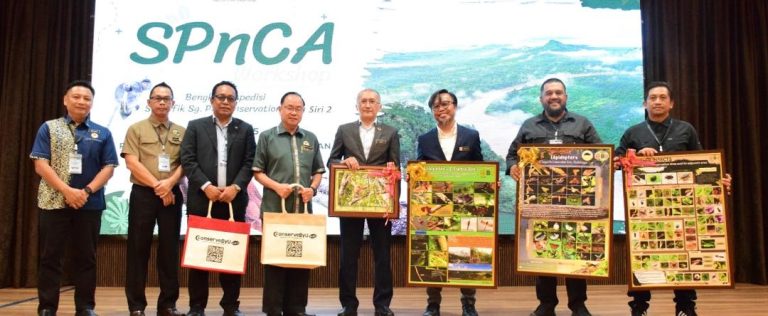KOTA KINABALU: WWF-Malaysia celebrated the International Day of Forests by planting fig trees for habitat restoration in critical areas on Sabah’s east coast.
Some 940 fig seedlings were planted in Tabin, Lahad Datu, Kinabatangan and Tawau led by WWF-Malaysia’s Sabah Landscape Programme (SLP) in collaboration with other non-governmental organisations.
The participating NGOs planted fig seedlings at their respective project sites aimed at creating and restoring forest corridors for wildlife.
The NGOs and firms involved were Bringing Back Our Rare Animals (Bora), Stop Borneo Wildlife, Hutan, APE Malaysia, Tabin Wildlife Resort, Sabah Softwoods Berhad and oil palm grower Kuala Lumpur Kepong Berhad (KLK).
For the Tabin area, WWF-Malaysia, together with 14 employees of Sawit Kinabalu Group planted 100 trees at the Bagahak Ecological Corridor in Lahad Datu.
The state-owned palm oil company has set aside land to establish a 4km-long wildlife corridor to reconnect Tabin Wildlife Reserve to the isolated Silabukan Forest Reserve through forest restoration.
WWF-Malaysia Sabah conservation chief Dr Robecca Jumin Sawait said Kinabalu Group and other palm oil companies were welcome to get involved in efforts to protect wildlife and important natural habitats as part of their sustainable production initiatives.
“It’s a step in the right direction towards stopping deforestation and protecting important forest areas,” she said in a statement on Wednesday (March 23).
The project also aims to enhance riparian function by active restoration for erosion control and improved water quality to support sustainable production, the statement said.
Under the ongoing landscape programme dubbed Restore Pillar, over 7,702 tree seedlings have been planted in the Bagahak Ecological Corridor and Mt Wullersdorf since October, covering an area of 20ha.
Bora executive director Datuk Dr John Payne added that as part of a new approach to reforestation, it was focusing on species that provide food for rare animals, rather than the wood species typically planted to revitalise degraded land.
“Not only are figs consumed by a wide range of wildlife, including orang utan, but they also sustain wildlife during times of scarcity as the majority of fig plants fruit all year around,” he said.
Bora has planted more than 6,500 fig plants on 150ha and has also set up the largest seed bank and living plant centre to sustain living examples of every fig species for future generations under the Sabah Ficus Germplasm Centre at Tabin Wildlife Reserve.
“There are over 80 native fig species in the Bora nursery with different species fruiting at different times through the year, and many can be propagated vegetatively, without having to wait for the fruiting time.
“They can grow fast, up to 4m in the first year if the soil is good and frequent weeding is done,” he added.
Payne said the project was part of a three-year project funded by Unilever, in collaboration with WWF-Malaysia, to support Bora’s aim to boost orang utan food supplies in the oil palm landscape.
Unilever is also helping to restore and maintain a 14km wildlife corridor, covering 1,067ha within a commercial plantation in Tawau, to link up fragmented areas of natural forest and protected reserves for wildlife movement.
WWF-Malaysia’s SLP combines both conservation and sustainable development by integrating the protection of forests, wildlife and rivers, with Roundtable on Sustainable Palm Oil (RSPO)-certified production of oil palm, and restoration of ecological corridors as well as riparian reserves.
Source: The Star






